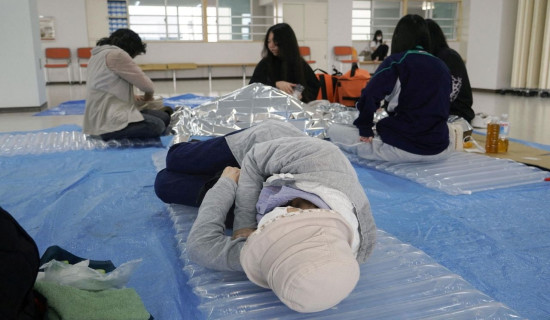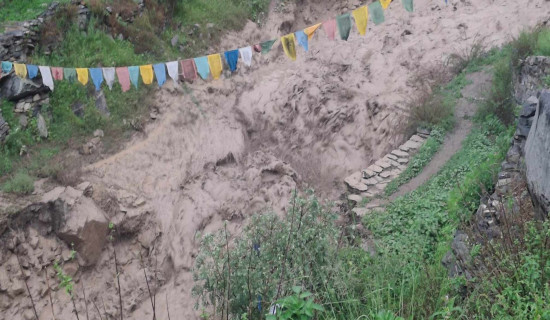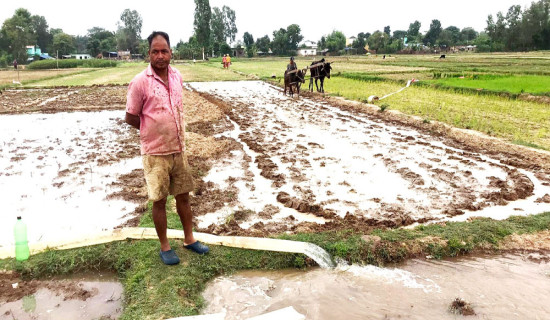- Wednesday, 30 July 2025
Way To Protect People From Heatstroke
In recent years, heat waves have increased in duration, intensity, and frequency worldwide. Climate change is driving temperatures to dangerous extremes, which were uncommon weather occurrences, are now commonly occurring in summertime. Heat stroke is one of the most dangerous and potentially fatal illnesses among the many hazards due to climate change, as the Earth's temperature is rising every year. Preventing heat stroke must become a public health priority as societies struggle with rising temperatures, not only to save lives but also to increase resilience to climatic instability.
Heat stroke is a serious heat-related sickness that happens when the body's ability to regulate its temperature fails due to extended exposure or physical activity in hot weather. A core body temperature of more than 104°F (40°C) is indicative of it, as are symptoms including nausea, dry skin, disorientation, confusion, and occasionally unconsciousness. Heat stroke can cause death, irreversible brain damage, and organ failure if treatment is delayed.
Medical problems
Heat stroke is nearly completely preventable, in contrast to many medical problems. However, it affects thousands of individuals annually, especially the elderly, small children, sports, outdoor labourers, and those without access to proper cooling. The continued prevalence of avoidable heat stroke mortality is a clear indication of structural deficiencies in emergency response, infrastructure, urban design, and public awareness.
The conditions that cause heat stroke are getting worse due to climate change. Extreme heat events that historically happened once every 50 years now occur almost five times as frequently. The "urban heat island" effect causes temperatures in cities to be several degrees higher than those in the surrounding areas because of their concrete landscapes and lack of green spaces.
A disproportionate number of vulnerable populations are impacted. People in low-income neighbourhoods sometimes live in buildings with inadequate insulation, lack air conditioning, and have little access to healthcare. Farmers and construction workers alike must endure extended exposure to the sun without the necessary safety precautions or rest period. These disparities exacerbate the public health issue and necessitate immediate systemic changes.
Knowledge is the first line of defense against heat stroke. Extreme heat is still viewed as an inconvenience rather than a threat by many, who continue to underestimate its consequences. Communities must be taught via public health campaigns to stay hydrated, take preventative measures during heat waves, and recognise the warning signs of heat-related illnesses. Clear, consistent messaging must be a top priority for governments and media during heat waves. When necessary, alert systems should be available in several languages on mobile devices, television, and radio so that people know when and how to take precautions. Information can also be disseminated and temporary cooling shelters can be provided by schools, community organizations, and places of worship.
Long-term prevention of heat stroke necessitates reconsidering the layout and design of our communities. To lower surface temperatures, urban development must include more green areas, trees, and reflecting materials. Residential buildings should be modified for improved ventilation and insulation, and public transportation hubs and sidewalks should have water fountains and shade structures. First aid, water, and air conditioning can be found in libraries, community centres, or religious places. They serve as vital havens during heat waves, particularly for the elderly and homeless.
Strict rules must be followed in workplaces, particularly those that require outside labor. During high-risk times, employers should offer enough shade, hydration breaks, and adjusted work schedules. In sectors including construction, delivery services, and agriculture, heat safety training should be provided.In order to scale and maintain heat stroke prevention activities, government policy is essential. These plans should cover long-term climate adaptation strategies, emergency services coordination, public engagement, and forecasting.
Healthcare systems must be ready as well. Emergency responders and healthcare professionals should all receive training on how to identify and treat heat stroke quickly. As high heat events start to resemble the intensity of natural disasters, hospitals should create preparations for emergencies. Crucially, prevention from heat stroke and climate change mitigation must coexist. Reducing greenhouse gas emissions, switching to clean energy, and making investments in climate-resilient infrastructure are the long-term solutions to heat waves that are getting worse.
Prevention
Preventing heat stroke is really about respecting human life. It is about realising that dignity, safety, and health should not be treated like seasonal cases. It is about making sure that no worker has to perish in the sun from a lack of drink or rest, no child has to collapse on a sports field, and no elderly person has to suffer due to heat stroke. Communities need to be given the tools and authority to look out for one another. Heat stroke is a symptom of larger systemic inadequacies in our ability to anticipate, respond to, and adapt to rising temperatures; it is not an inevitable occurrence.
We can no longer afford to treat heat waves as isolated weather occurrences, as the Earth continues to overheat. These are crises in public health that are made worse by climate change, inequality, and inadequate infrastructure. The solutions are awareness, adaptability, and action that are within our reach. We can save lives and stop innumerable cases of heat stroke by making investments in climate policy, urban design, workplace safety, and education. Now is the moment to take action before the next heat wave hits.
(Dr. Lohani is the executive director at the Health Concern. lohanis@gmail.com)




-square-thumb.jpg)


-square-thumb.jpg)
-square-thumb.jpg)








